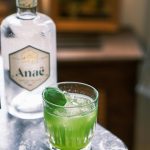Your cart is currently empty!

Steven Coulson
Steven has been drinking beers, wines and spirits for decades and has a propensity to go about them at length after a few drinks.
Latest Posts
- My wife found out our favorite Gin for martinis was discontinued. I think we are good for a while…

- Oregon Road Trip: Freeland Spirits Garden Botanicals Gin

- Botanist with Trader Joe’s Lemon and Elderflower Soda

- I’m one of the worlds leading buyers of craft gin in the world and a international spirit judge AMA

- I’m blown away…. By how let down I am by this Gin.

Categories
Tags
Social Links

Uncovering Hidden Treasures: A Thrilling Estate Sale Experience
My wife and I have a passion for uncovering hidden treasures at estate sales. Engaging in this hobby has led us to some incredible finds, and our recent adventure was no exception, especially when it comes to wine. While it’s not common for us to stumble upon bottles, when I saw these, I knew I couldn’t let them go—despite the risks involved.
With a total investment of just $20, I eagerly took home an intriguing selection, all of which I suspect may be from deceased owners (a common theme at estate sales). Over time, I look forward to opening each bottle and experiencing their unique stories. Here’s a breakdown of what I uncovered, arranged from left to right:
1. Petrus 1970
The first bottle boasts a mid-low shoulder fill and a noticeably depressed cork. I have high hopes for this one; it could be a hidden gem waiting to reveal itself.
2. Haut Brion 1974
Conversely, my expectations for this bottle aren’t very high. The ullage is notably low, which typically spells trouble for wine longevity, yet I plan to open it for a sniff. The shape of the bottle adds an element of intrigue.
3. Weingut Dr. Alex Senfter – Nierfteiner Orbel Riesling Beerenauslese 1976
This bottle has a promising fill level, but the dark glass complicates any assessment of the liquid inside. Still, there’s a glimmer of hope for this wine.
4. Beaulieu Vineyard Private Reserve 1971
If only the Petrus had a fill level like this Beaulieu! With a reasonably positioned cork and capsule, I’m tempted to open it based on the decent conditions, although online reviews suggest it may not live up to expectations. Nonetheless, science calls!
5. Porto Barros 1890
I was practically trembling with excitement when I picked up this vintage port. My knowledge of ports from such an early vintage is limited, but the crusty wax seal and a fill level boding well—almost to the shoulder—leave me quite optimistic.
6. Offley Vintage Port 1963
This port features an upper mid-shoulder fill and a somewhat depressed cork. While not as thrilling as the 1890 find, it still exudes potential.
Out of all these
